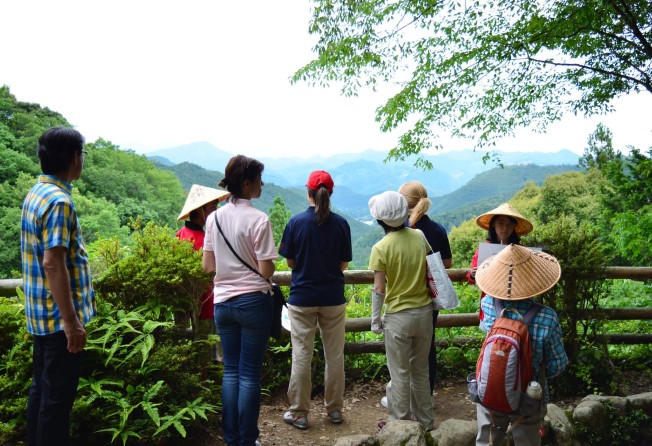
Numbers aren't everything: the Japanese way of handling tourism at Unesco world heritage site Kumano Kodo

Sugiyama Junya trudges up the hill with a pack of mud on his shoulder. He is making his way to repair the 1,000-year-old pilgrimage routes of Kumano Kodo in rural Japan.
It's a heavy pack, the 15-year-old says, but he doesn't mind the heat and sweat; it's his duty to safeguard the world heritage site he calls home.
"This is our asset and it's my responsibility," says Sugiyama, who grew up in a neighbouring village and became a trail repair volunteer three years ago.
His work is among a number of initiatives aimed at shifting Kumano Kodo's focus from mere tourism to community-initiated heritage conservation.
But now, the city of Tanabe - the gateway to the historic trails - is turnign away from mass tourism and opting for "quality tourism" instead.
Tanabe mayor Misutoshi Manago said the heritage site label raised the city's profile tremendously.
The number of foreign visitors has increased by two and a half times since Kumano Kodo was registered in 2004, from 1,409 to 3,389 in 2012. Income generated from tourism also rose, from 40 million Japanese yen (HK$2.95 million) in 2011/12 to almost 90 million Japanese yen in 2013/14.
The figures were all encouraging, but they were also warnings, said Tanabe City Kumano Tourism Bureau director Tada Noriko.
"We need to be responsible and develop sustainable tourism, rather than looking at just the numbers," Tada said. "We hope to welcome visitors who respect the history and culture … and can hike the trails. We are looking for quality, not quantity."
Kumano Kodo, located at the peninsula south of Osaka in the Kansai area, is famous for its natural landscape and hot springs.
In the past, pilgrims including royal families and monks journeyed through the mountain range to worship at the three grand shrines collectively known as Kumano Sanzan. The pilgrimage, signifying the hardships that humans endure, used to take months or even years.
"Local people are proud of the Unesco inscription," said Sakamoto Isao, an 86-year-old native who chairs the Kumano Hongu Guide Association. Recognition brought visitors and business to the rural villages, but the dramatic increase in tourists also proved a problem, he said.
"We don't have enough public toilets for 500 visitors," Isao said. "We welcome visitors, but … having too many tourists will disrupt the heritage site and our lives - we are still living here."
Big tour buses bringing visitors taking photographs and shopping may bring in big bucks quickly, Tada said, but it was bad for the city in the long run.
Local cultural critic Jimmy Pang Chi-ming said Kumano Kodo's case could be a good reference for Hong Kong, which is trying to preserve its intangible cultural heritage. But Hong Kong shouldn't expect too much.
"Mainland tourists don't care about Hong Kong's environment. And many Hongkongers regard any conservation work as an obstacle to money-making," Pang said.